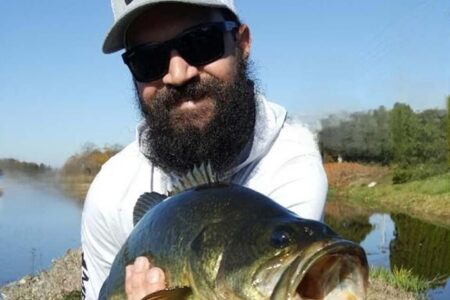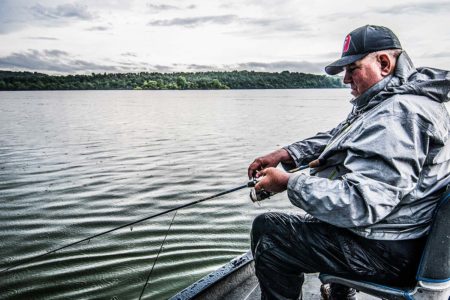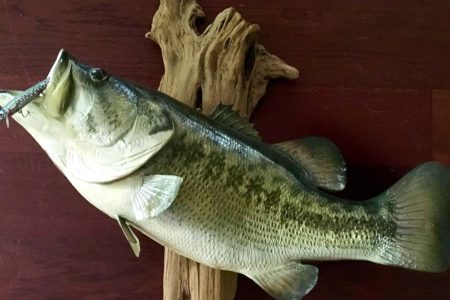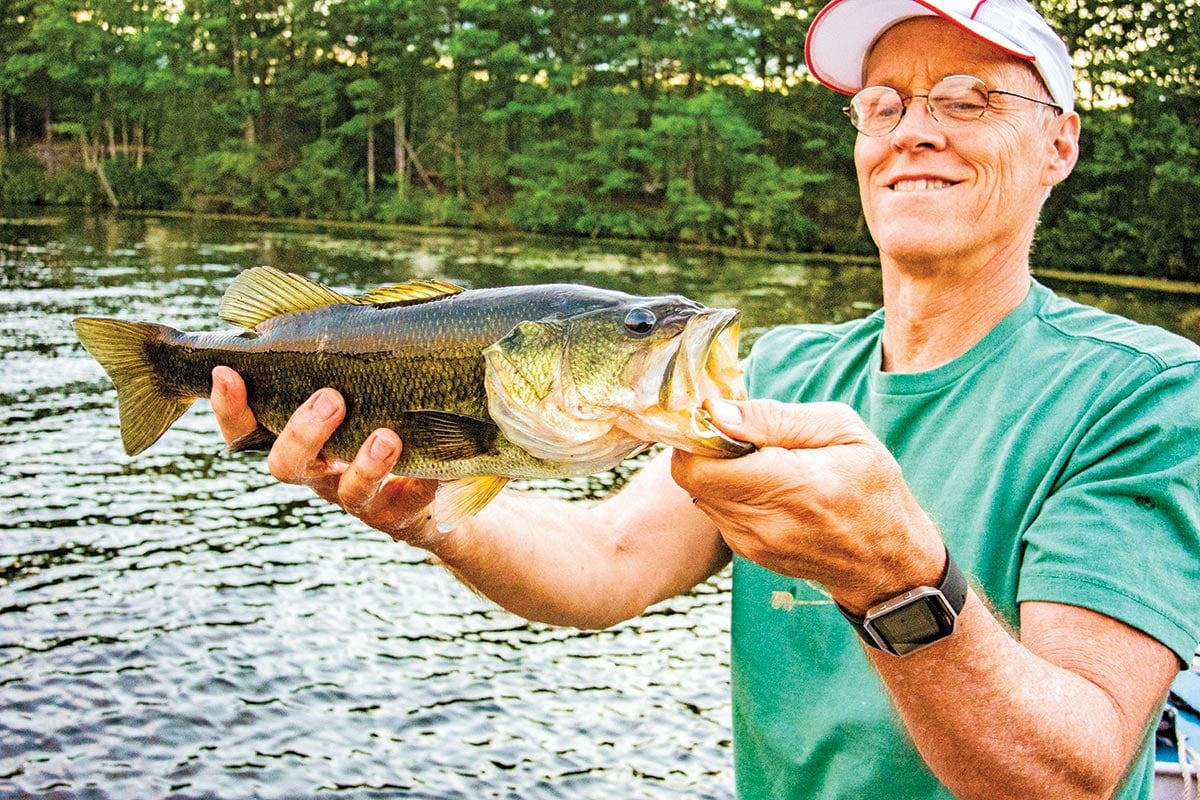
June is one of my favorites for freshwater fishing. As a primarily shore-based angler, it’s a great month to fish shallow waters near sunrise and sunset, with fish spread out and water temperatures generally not warm enough to send them to deeper holding areas. It’s comfortable for the angler, too, and every trip feels like a miniature vacation. Like so many other anglers, during this time of year I enjoy “frogging”; tossing large topwater lures into dense weed-and-lily-pad-covered water. The action can be fierce, and the bites explosive.
However, fishing pressure at this point in the season can also start to take a toll. Fish are getting leery of lures they’ve seen repeatedly. When it comes to the most frequently used lures, besides the soft-plastic worm and the crank bait, I can hardly think of a lure used more than the topwater “frog,” especially in these areas of shallow, weedy water. As a result fish that see these bulky profiles may be cautious and refuse to hit.
Fishing my family’s property in Down East Maine, I have become increasingly frustrated with this scenario, which repeats yearly. The lake my mother and father live on is highly pressured, and while the fish crush my cork poppers, jitter-bugs, and big soft bodied frogs in the early parts of the month they refuse them by the end of the month. They continue to hit large swim baits and poppers, but you can’t deliver and fish them correctly in such extremely weedy conditions (which abound in this particular lake). Since I enjoy the topwater “pads” bite so much, I was determined to come up with a solution. I tried several different iterations of basically the same frog-type lures I’ve mentioned above, but nothing really worked to my satisfaction.
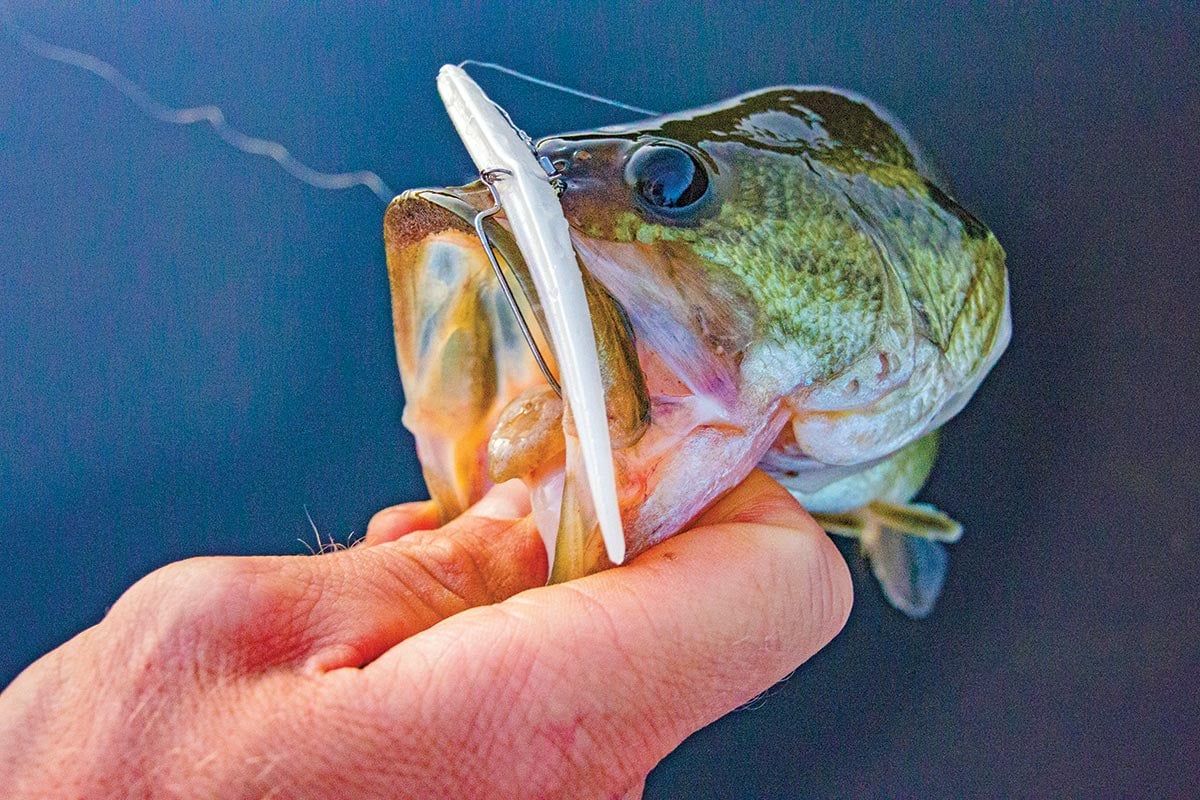
The Skinny Lure Solution
Frustrated, I headed to Kittery Trading Post one weekend to try and figure out a solution. Since the fish were refusing the bulky, large bodied baits, my thought was to look for something completely different that I could fish on top in a similar manner as the frogs. Since the weeds are extremely thick where I fish, I knew it had to be something I could make as weedless as possible. As a side note, this also has the added benefit of hiding the hook from these “smart” fish.
I am a huge fan of anything made by Lunker City, so I was immediately drawn to the Slug-Go. I bought the smallest ones they make; the 3- and 4-inch sizes. When I first bought them, I thought they were almost comically small, and was worried about how I’d cast them, but I figured I’d give it a shot. I matched them with some size two and four weightless, non-offset, swimbait hooks and figured I’d give it a shot. Worst case, I figured they’d be great for crappie on a small jig head in the future.
The first time out with my father in his boat, the results were dramatic. I had a dozen bass to about 3-1/2 pounds during just an hour of late afternoon fishing, while my dad struggled to even give a hit with other topwater lures and spinner baits. The fish were launching fully out of the water at the little baits, and I missed at least three times the number of fish as I caught. Once my dad switched over to the Slug-Go, on his very first cast he was broken off by a good fish. He ended up landing a very solid mid-4-pound fish that trip, outclassing me with my own method.
Since then, I have used this method on other ponds and lakes, both day and night, to pull decent fish out of highly-pressured summer waters.
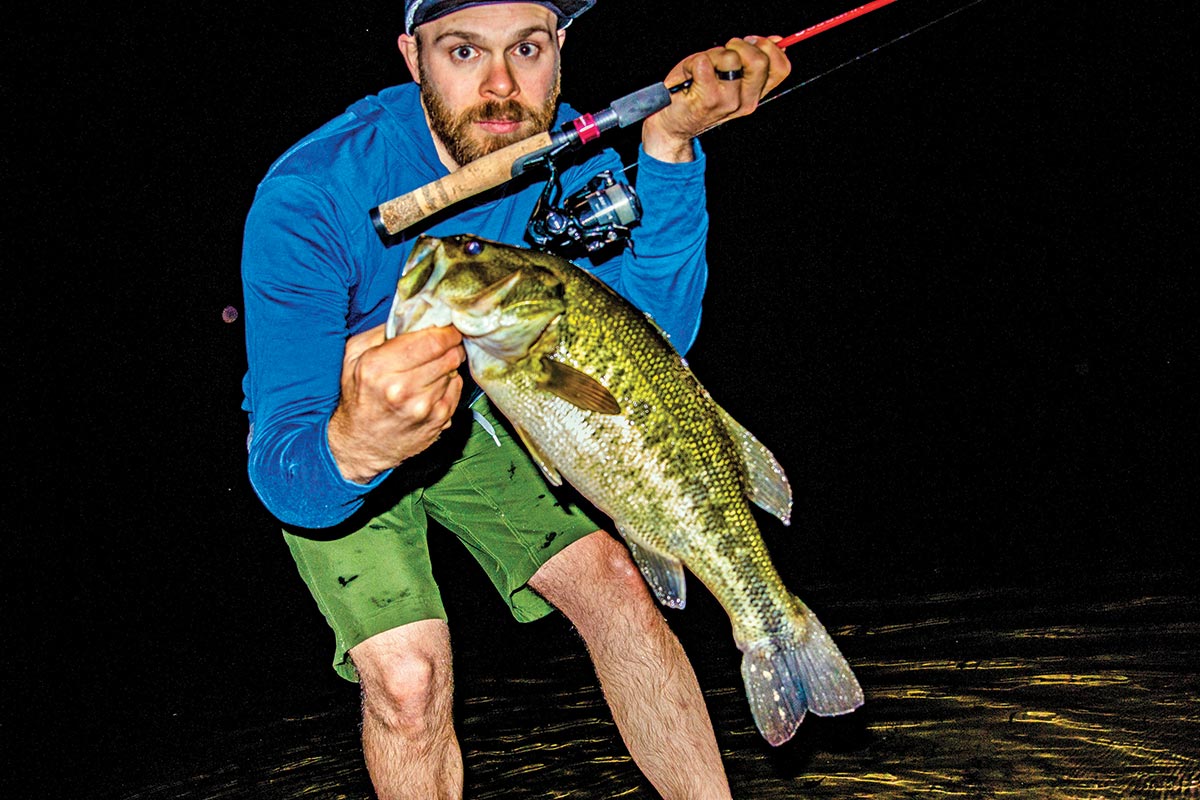
The Method
I’m not really convinced that the specific soft plastic matters very much. I use Slug-Gos because I am an avid striped bass fisherman and they are really good for that kind of fishing, but there is no reason you couldn’t use one of the myriad other brands. Instead, I think there are two factors that are critical in being effective with this approach.
First, I want the soft plastic to be small, and more importantly, thin. I want it to be as different from what other fishermen are throwing as possible. Since most are throwing chunky profiles that splash down with lots of disturbance, cast a large shadow, and plow through the weeds, I’m trying to go with something that is opposite to all that. Most guys are not reaching for these tiny baits when targeting these areas, and that’s exactly why I think they can be so effective. I am not usually an advocate of going smaller with your offer to catch fish, but in this case, it’s more about being different.
The second big factor for me in being effective with these small, skinny baits is to make the action extremely splashy and erratic. Since the profile is small, I try to make up for it somewhat by making the commotion large. I think this helps bulk them up in the “mind” of the fish; I am making it seem like something larger by causing more water movement. Then, when the fish sees the profile is not something they’ve been acclimated to, they crush it. To make as much of a racket as I can, I almost work these little lures like I would miniature pencil poppers in surf fishing. I bounce the tip with a fast cadence and a good amount of back and forth action, with a very slow retrieve rate. The result is that the lure stays right on the surface and jumps, splashes, and skips across the top of the weeds. In other words, I really “whip” it around, to quote my father. I think it’s important to point out however, that you don’t want to go fast. As it is, I miss a fair amount of fish trying to grab the little lure, and if you’re going extremely erratic and also too fast, it makes it hard for the fish to grab the small bait.
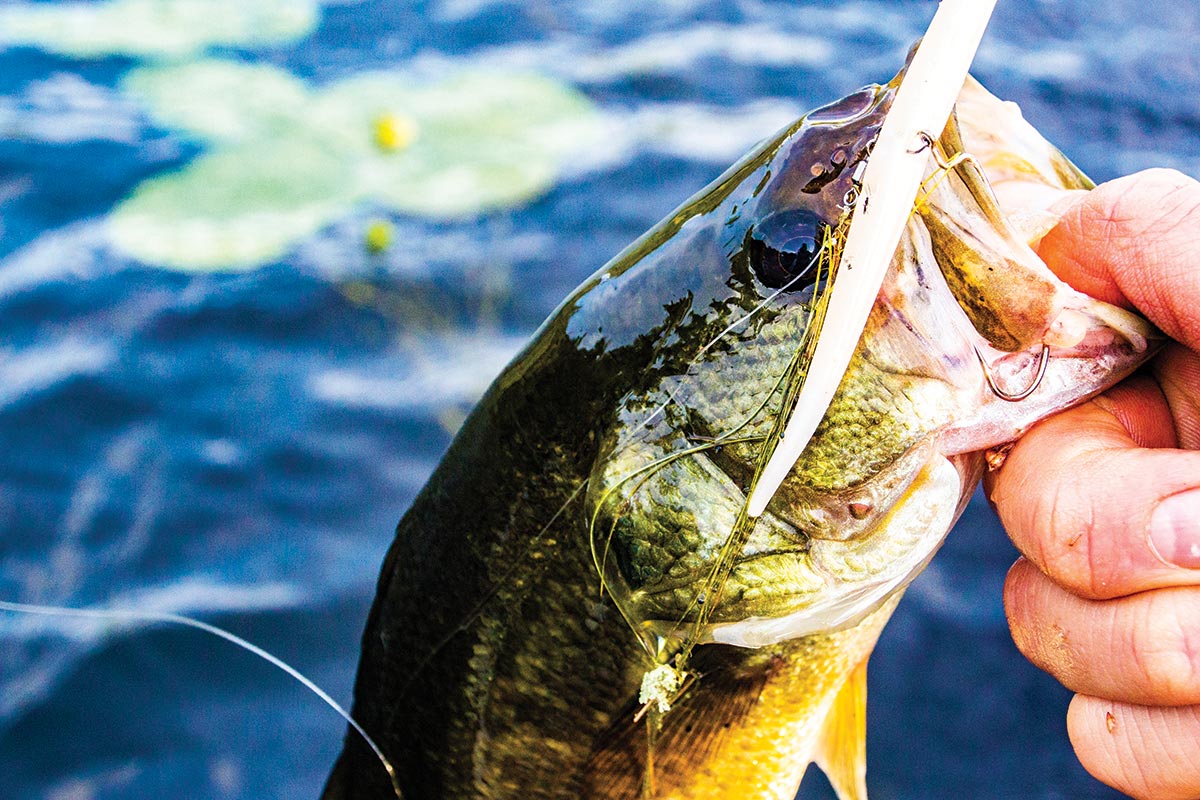
The Gear
This kind of fishing takes fairly light gear, but it doesn’t have to be fancy. Essentially, whatever you have that can cast the small weight-less lures will work. My father uses a 7-foot light action rod paired with very high quality 6-pound monofilament on a 1500 size reel, and a 10-pound leader. This is a fine setup, but casting distance can be a problem. More than the rod or reel, line is a huge limiter in your ability to deliver these baits. I think it’s the most important factor. I prefer to use braided line, and you can get incredibly thin 3- to 6-pound test braid now, which is much thinner than 1-pound test monofilament. I use Spiderwire Invisibraid in 6-pound breaking strain. You don’t want to skimp on quality, as wind knots are a constant threat with line so thin. I think Invisibraid is one of the best. I pair this with a 1000 size Shimano reel and a light action 6-foot rod. I like to use a 12-pound test fluorocarbon leader; although I do concede that the fluorocarbon probably isn’t necessary since the lure is on the surface 95 percent of the time. With this setup I have no problem casting the small lures over 40 feet; plenty far enough to get them into the thickest weed patches, especially while in a boat or kayak.
I know what some of you are thinking: this is ultra-light gear and it would be a struggle to pull large fish out of heavy cover with such set-ups. You are certainly correct that it is a challenge. I have lost several large fish simply because I could not stop them, and they went so deep into the weeds I couldn’t even feel them anymore; my line was just tangled in the pads. This can be frustrating. However, the pay off in landing a decent bass with this technique is just that much sweeter as a result, and without the light gear, the miniature weightless plastics are nearly impossible to cast. I have found that the key is to fish a drag as close to the breaking point of the line as possible, and to be ultra-aggressive in the first moments of the fight. I walk the razor’s edge of breaking off every time I set the hook. As soon as I’m set, I try and “water ski” the fish across the surface; in other words, I “horse” them. If the fish is even moderately sized, it will recover and take you down, but by that point hopefully you are further out of the worst of the weeds. The great thing is, since the little soft plastics are so inexpensive, if you do lose a couple, it doesn’t hurt your wallet too bad.
Trust me: it’s worth the risk just to see another one of those chunky Maine bass explode out of the pads as the sun sets on another mid-summer evening.

